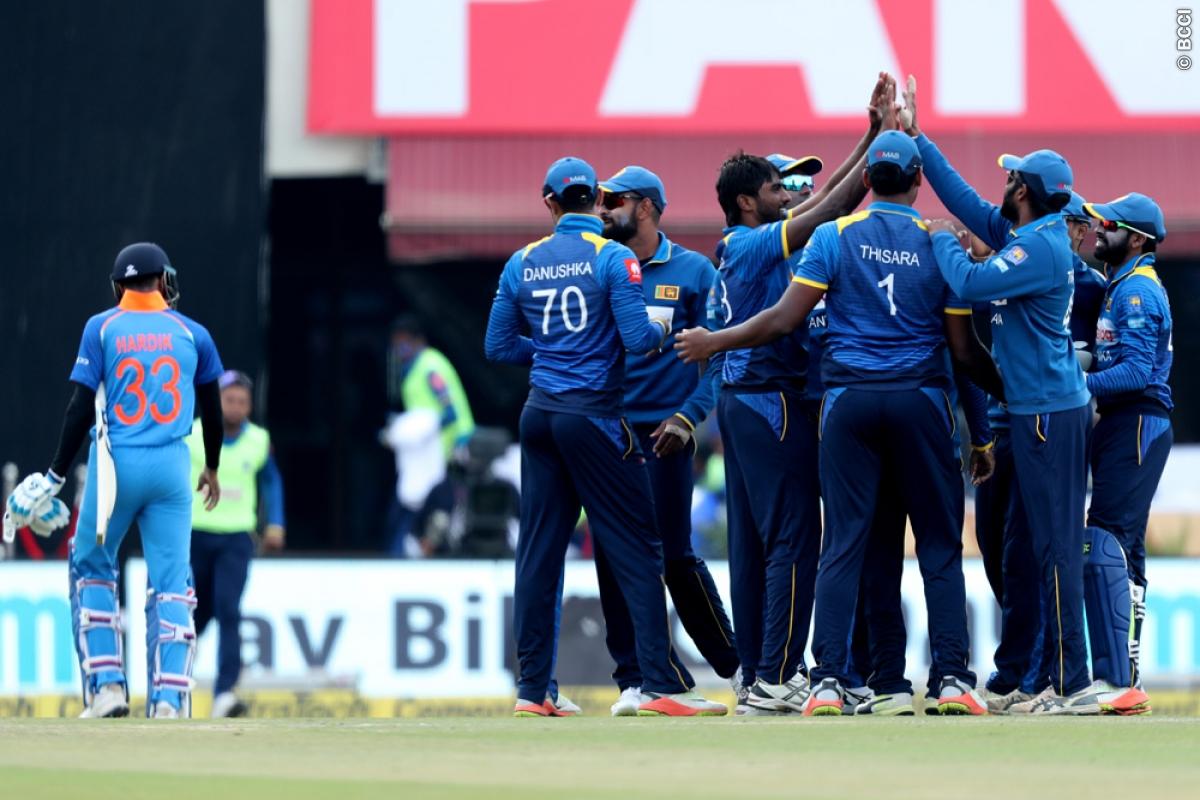Sri Lanka’s ‘Brain Centre’- History in the making or just repeating itself?

BCCI
While Sri Lanka’s innovative GPS-driven data analytics technology, which they have borrowed from football, could widen one’s eyes in awe of its sophistication, but one cannot overlook it as the SLC’s desperate attempt to prolong the careers of their proven few at the face of a barren youth system.
One doesn’t need to point out how terrible your state is when you’re playing a tri-nation series with Bangladesh and India’s B-side and the other two teams end up in the final. To further add to that insult, it needed Dinesh Karthik’s last ball six against Bangladesh to give Sri Lankans a true feeling of liberation after 70 years of their independence.
Yes, Sri Lanka cricket is at its nadir at the moment, but, one cannot state that the board has been sitting quietly about it doing nothing as their latest invention “Brain Centre” reflects their concern. The technology has been put in place to facilitate 'identifying, developing, performing, managing and monitoring' their cricketers, both emerging and the full-bloomed. What it would actually do is predict the future performances of the players and based on the collected samples and try keeping a close eye on every player’s workload management to assess their recoveries from injuries.
One doesn’t need eyes on their head to conclude that Sri Lanka’s latest struggles have been primarily due to two reasons - firstly, the retirement of the likes of Kumar Sangakkara, Mahela Jayawardene, and Tillakaratne Dilshan, and secondly, the ageing injury concerns of current stars like Asela Gunaratne, Angelo Mathews and more.
The solution to the first problem is pretty much long-term and the “Brain Centre” could hardly assure impeccable prediction of a player’s growth. Ask Barcelona FC, from where SLC fielding coach Nic Pothas borrowed the technology and who are supposedly the epitome of talent creation in their business, and you’ll know that the machinery hasn’t been optimal. The Catalans, who had stunned the world with its emerging youngsters under Pep Guardiola a few years back, hardly have five La Masia academy graduates in their side today.
This leaves us with Sri Lanka’s second dilemma, which could realistically be solved ahead of the 2019 World Cup. Assessing the workload management and preventing injuries could be manageable, and its something football has been doing since the 1980s. It was Dynamo Kyiv’s legendary manager Valeriy Lobanovskyi, who was known to have taken help from computers and analytics for proactively preventing errors and enhancing fitness.
While he was surely ahead of his time, it wasn’t until Belgian chiropractor Jean-Pierre Meersseman introduced it in AC Milan that the world took notice of it. Following the failed buy of Real Madrid legend Fernando Redondo, who had helped Los Blancos win two Champions Leagues in six seasons but was reduced to an injury-prone mediocre player at San Siro, the Rossoneri had vowed never to make the same mistake again.
This had led the legendary Italian club to help the Belgian introduce the famous ‘Milan lab’ in 2002. Like the “Brain Centre”, the lab resorted to collecting meticulous data that would help them to foresee any of their player’s injuries on the field. It had incorporated different techniques like kinesiology, psychology, and neurology to ensure that they kept their players fit at any cost.
Consequently, Milan had improved brilliantly in one year with increased practice days for the players as they finished third on the league table in 2003. They beat Roma to win the Coppa Italia and Juventus to win the Champions League in that same season, lifting it for the first time since 1994. The club was at its peak then, as they would go on to win the Scudetto the very next season and barring the shocking defeat against Liverpool in Istanbul, everything went for right them.
They exacted the revenge in 2007 though, where a side consisting of the likes of Clarence Seedorf, Filippo Inzaghi, Paolo Maldini, Gennaro Gattuso, and more, all in their 30s and some even 40s but still at their prime, beat the Reds 2-1. The ageing, yet the world-class squad had only four players in their 20s that epic season. It was this instant success at Milan that has attracted many to resort to analytics and with the 2019 World Cup coming up next year, the Lankans would be eyeing the same in order to get themselves back in the world cricket’s map.
Meersseman had once claimed that ‘age doesn’t exist’ and at a time when nothing is clicking for the Sri Lankan side, they would undoubtedly want the experienced likes of Upul Tharanga, Lasith Malinga, Thisara Perera and Chamara Kapugedara (all either well above 30 or in the late 20s) to step up one more time by overcoming the physical and psychological inhibitions with the help of the “Brain Centre”.
However, every good thing comes to an end and something so grandeur like Milan’s lab also had a terrible fate waiting for it. As the likes of Inzaghi, Gattuso and Nesta couldn’t keep their ageing body injury free Milan decided not to extend their contracts anymore, but it was not before they convinced David Beckham to join Milan at the age of 34.
Milan
One lesson it gave to the world was that instead of attempting at prolonging greatness against the forces of nature, it would rather have been more proactive in breeding talents - something Sri Lanka have been terrible at as of late. One look at Sri Lanka’s domestic cricket’s structure and it would be clear that the talents of Kumar Sangakkara and Mahela Jayawardene are nowhere to be seen now.
Of course, Sri Lanka’s legal mess at the domestic level that has been diluted to grant the first-class status to tier B clubs has been largely the crux of it. The meagre payment has also been a huge problem, which has seen club players go out to England and Australia in search of better opportunities and livelihood. And in the face of such talent drain and dire crisis a good World Cup campaign could do wonders for SLC, which they might actually be looking at single-mindedly.
"Those who cannot learn from history are doomed to repeat it.” ‘Brain Centre’ could either be a brilliant success down the years leading other nations to imitate Sri Lanka’s rise from the ashes, or it could end up being a failed lab experiment in the few years with its status plummeting further.
Who will be the PSL champions? Predict Today & WIN Cash Prizes.
Download NostraGamus here to get ₹20 Joining Bonus FREE!
Predict Matches to Win UNLIMITED PayTM Cash Prizes! Over 4,000 winners daily.
Predict LIVE Cricket Matches happening worldwide today! Play from your mobile anytime, anywhere.
Download NostraGamus here to get ₹20 Joining Bonus FREE!
Predict Matches to Win UNLIMITED PayTM Cash Prizes! Over 4,000 winners daily.
